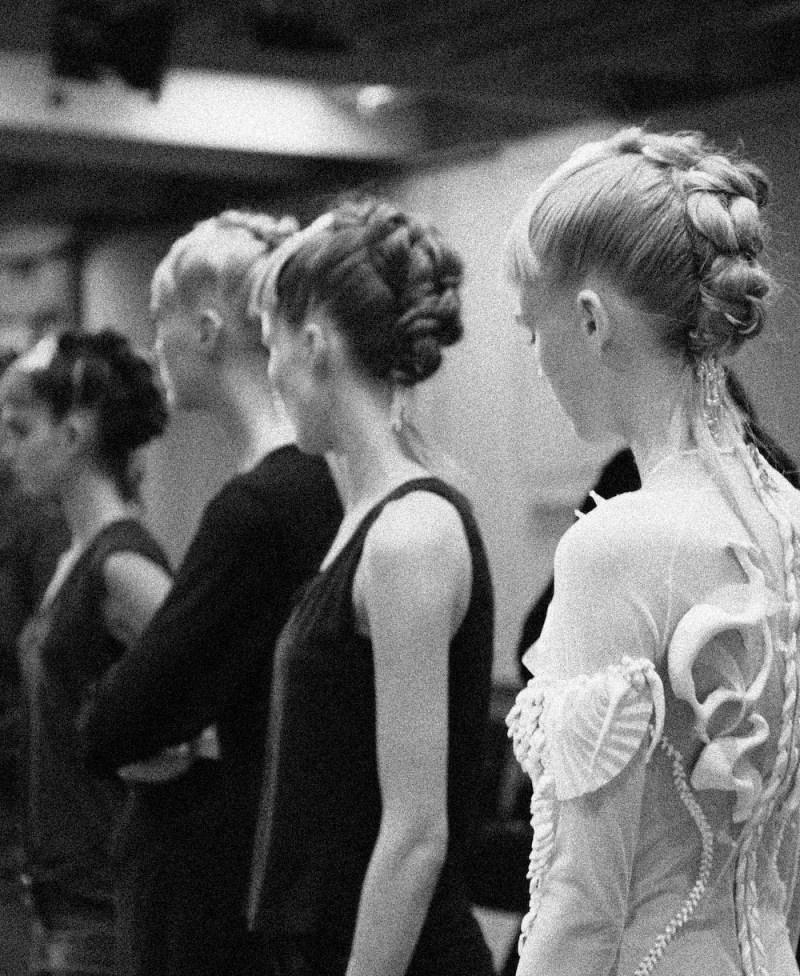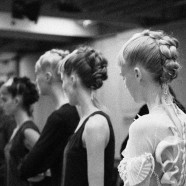The next big thing in Fashion

What happens when Big Data meets Fashion? The emerging practice of ‘benchmarking the value of a fashion model’ is set to bring fairness into a contested market.
The fashion industry is not only one of the fastest growing industries in the economy, but also one of the fastest changing ones. Constantly concerned with launching new trends and introducing new products, it’s easy to see why fashion has become so challenging. Each season, fashion brands compete for individuality, so as to attract new customers through the most creative and appealing advertisement campaigns. With fashion trends changing faster than ever before and the shortening of fashion cycles, it has become common place for brands to release more collections during a year.
In the 90s, two collections used to be the norm, Spring-Summer and Fall-Winter. Today, ‘Fast Fashion’ brands like H&M, Zara, Mango, have new collections almost every month thereby which, other ‘High Fashion’ brands uniformly provide new clothing and accessories through the launch of mid-season collections. In addition, brands are embracing the idea of having up to six new collections per year. However, having an amazing new collection is just not enough, which is why brands strive to spot the best photographer, creative director, stylist. Above all, choosing the most promising model to represent their brand becomes paramount.
One of the main reasons why newcomer models are more in demand today than ever before is because they are instrumental for a brand to succeed. Discovering ‘the next big thing’, whose popularity will bring new customers has become the key factor for how brands attract fashionistas and what sets it apart from its competition. Each year, a new class of models get plucked from obscurity to runway glory, successfully landing bookings and working with the biggest names in fashion. While top models like Kate Moss, Gisele Bundchen, Adriana Lima, Karlie Kloss are infamous, casting directors often have the ardent task of getting an overview of every model, especially the new faces.
What would seem at first glance to be nothing but a memorable tale about the next wave of fashion models may turn out to be the opening chapter of a much larger story
Typically speaking, a model’s career starts at the catwalk and in most cases, it is also the backdrop for discovery by casting directors or by the public. It’s here that a model can be scouted by the star makers of the industry-editors, photographers, cosmetic company executives. It’s here that front-row fixture Anna Wintour might take notice of a girl and put her in the pages of Vogue. Each season more than 350 designers present their new collections during the ‘Big Four’ fashion weeks, with each show requiring an average of 40 walks, over 14,000 walks alone are presented. While some models may run up to 50 times during the fashion weeks, others are fortuitous to have their first appearance. Getting cast in an important designer’s show or having a photo shoot with a world famous photographer like Steven Miesel or Patrick Demarchelier can lead to being booked in prestigious magazines and instantly launch a career.
While all of the above are essential signals that connotes the rise of a model, it alone is not enough to determine whether a model can burst out of the anonymous pack. Yes, that’s the story as most of us know it. But it is incomplete. What would seem at first glance to be nothing but a memorable tale about the next wave of fashion models may turn out to be the opening chapter of a much larger story. Given the sort of clubby, insular thinking, it should come as no surprise that the prevailing system of identifying talent in the fashion industry involves a level of dysfunction that should be inconceivable in times as sophisticated as ours. As clients set the bar high for today’s top models, the application of predictive analytics to model’s careers – an emerging field sometimes called ‘model analytics’ – is enormously challenging.
For all these reasons and more, the idea of applying predictive statistical analysis to alter the way fashion professionals are benchmarked and hired is a science that has never been needed more than now. Consider EDAQS, a start-up based in Austria. EDAQS applies a hi-tech approach to quote fashion models thereby bringing a much needed transparency and fair market condition to the fashion industry. Since 2008, EDAQS has been developing its IFDAQ systems (acronym for International Fashion Digital Automated Quotation), to become the mightiest analysis instrument for fashion. Its goal is to accurately define a scientifically impeccable and intelligently market-shaped quotation of a fashion model. This solves some of the most important issues and problems of the modeling industry, which makes it one of the most disputed business areas of the fashion business.
The potential power of this data-rich approach is obvious. IFDAQ systems doesn’t only analyze and quote the performance and work of a professional fashion model, but is able to provide a meticulous breakdown of the entire fashion industry. This includes fashion brands, magazines, modeling agencies, photographers as well as all professionals, who have done public and significant work. Generally, if one is listed in the IFDAQ, they can consider themselves a recognized professional. The IFDAQ is further able to help clients analyze, research and plan their work in fashion before making the final decision for booking the right model.
For a sense of what the future of model analytics may bring, I turned to Daryl De Jori, the director of AI at EDAQS. The benchmark value of a fashion model is primarily defined through a performance-related pattern. That means if a model runs a fashion show in Paris today, the IFDAQ value will directly consider this show, quantify its importance that could brand the value, her running position, and number of appearances and provide a new quotation tomorrow.
For each single job, the IFDAQ takes plenty of factors into account and tallies it all up, matching it with other model jobs and generating a direct marked position for each model. This new way of evaluation for single fashion jobs has shown to increase the ambition and personal diligence of the models. Those models who were introduced to the IFDAQ and took part in an internal study, have also confirmed that the IFDAQ is a great tool to get jobs, have efforts acknowledged by the industry, and to bring fairness into a contested market.
The way we now judge professional potential is rife with hidden biases
The algorithms go further still. From those looking to book a model, to those casting for a high-fashion editorial, the IFDAQ does not only provide a simple top list, it provides various kinds of intelligent ranking depending on the clients’ requirements to help them to find the best possible model they are looking for. Moreover, it can predict if a model like Kate Moss is still a lucrative advertising face? How far Kendall Jenner will rise in the world of high fashion? Or who are going to be the next top models?. The resulting benchmark provides a plethora of analyses and provides data-hungry marketing departments as well as campaign makers with a vast range of technical indicators and professional analysis tools.
One of the biggest benefits of using IFDAQ is that industry professionals no longer need to research the competition. Precise forecasts and prognosis data of a model paves the way to have successful planning of marketing strategies and campaigns for any brand and any involved fashion professional. The ‘top 500’ list is a great list which could be considered to book a model(s) for an international campaign. For brands who plan to start a national campaign, the ‘National Rankings’ list which shows the most popular models by their nationality would be a great help. To help industry people to choose the right newbie, the IFDAQ developed an activity list which shows the top ‘Gainer’ and ‘Loser’ newcomers as well as a list of ‘Newcomers to Watch’. In addition to knowing the position of a model in a list, it is also important to know how experienced a model is and this is what sets the IFDAQ apart from other superfluous lists, as each model profile includes a deep and exact analysis of the jobs and experiences she has had. ‘What this technology and the changes to the industry are unlocking is the ability for customers to have exactly what they want and not necessarily what’s been decided for them,’ De Jori says. ‘It lets the fashion market be more efficient.’
Part of IFDAQ’s secret sauce is the way it aggregates prognostic patterns and scientific trend calculations from a wide variety of sources around the globe – from social media, to a models booking signal and then makes it accessible in real time. It also needs to be easy for a layperson to grasp. ‘People shouldn’t have to be data scientists to understand the insights,’ De Jori adds.
The prospect of using big data to benchmarking the value of a fashion model excites De Jori. He sees it not only as an advantage to the fashion industry but also as an important new tool that provides an unprecedented diversity: a sort of inspiration for the fashion world to find new marketing opportunities. Perhaps the most exotic development is its inventors and cooperating market leaders making the systems accessible at the start of this year to the entire fashion world, to offer all professionals and involved parties the maximum level of fairness, security, and above all boundless transparency.
When I began my reporting for this story, I was worried that model analytics, would only widen the divergent arcs of the professional lives of the fashion fraternity, but I now believe the opposite is likely to happen. In a boundary-blurring business like fashion, we will look back on these endeavors in a decade as a quantum leap that led us towards a fashion market that’s fairer to people at every stage of their careers.
By
Clinton Gonsalvez & Iva Mirbach
This article first appeared in the Spring/Summer 2016 issue of LOVEFMD magazine.
Follow Fashion Model Directory on Pinterest, Facebook, Linked In and Twitter!








